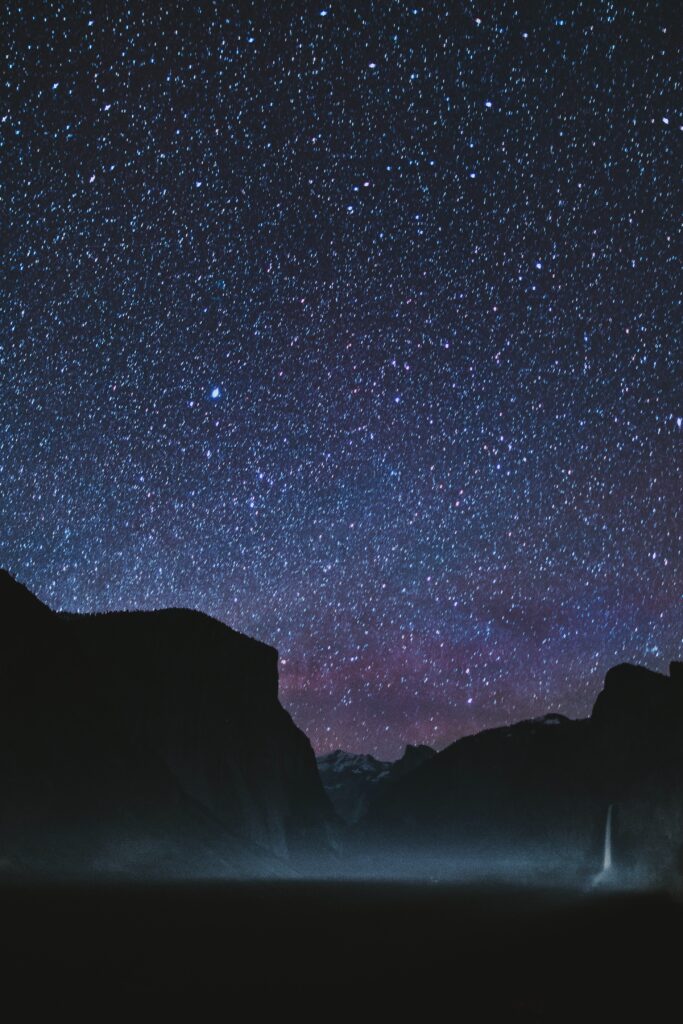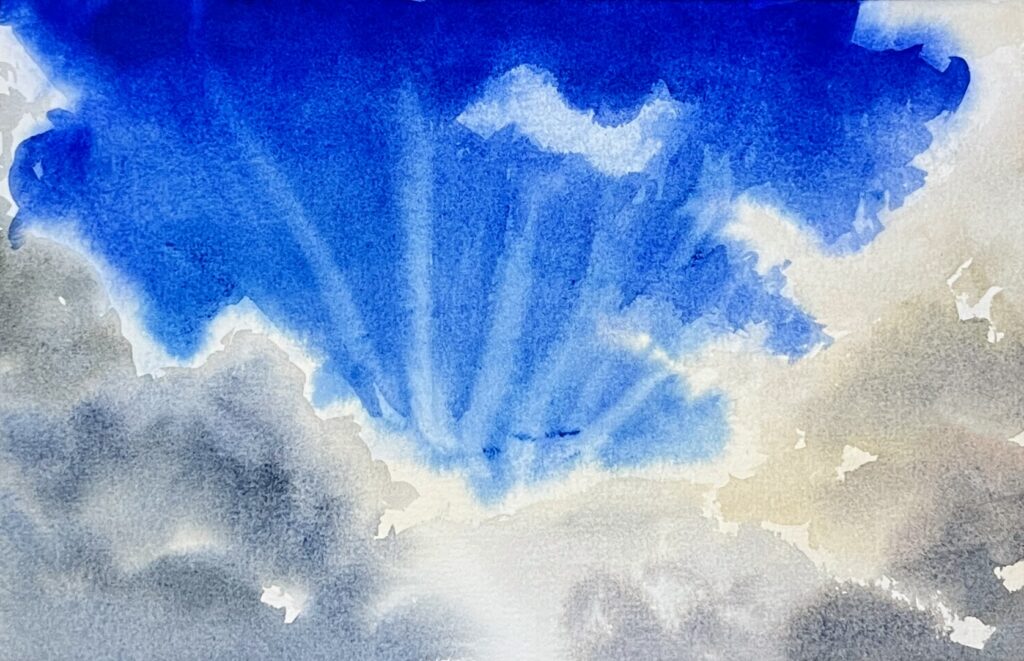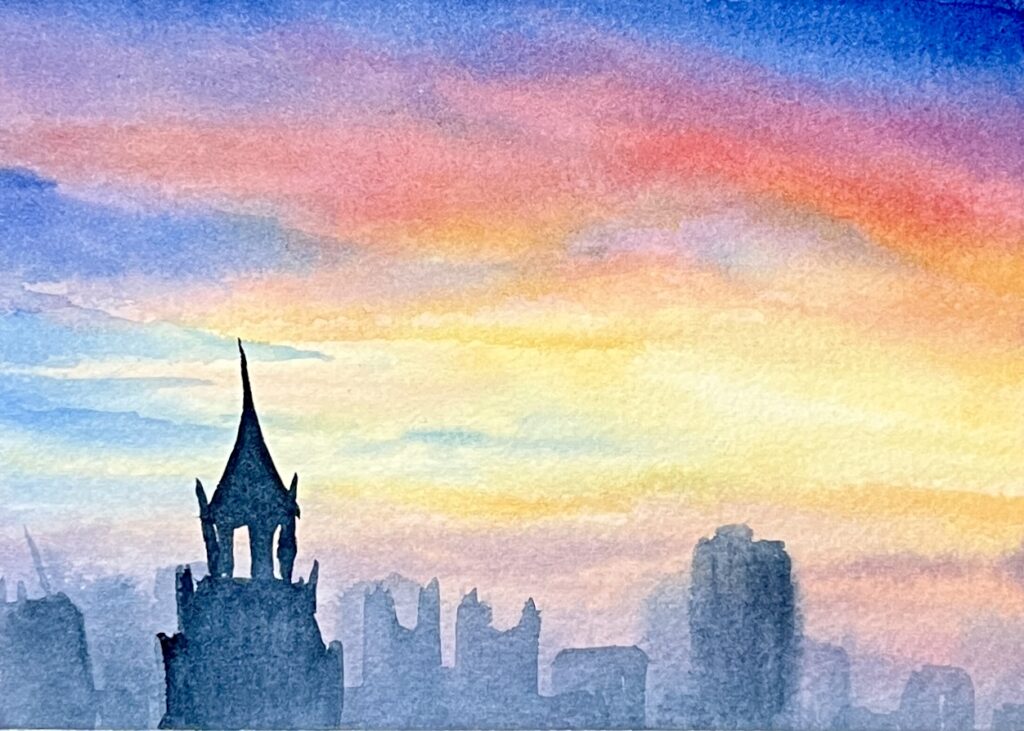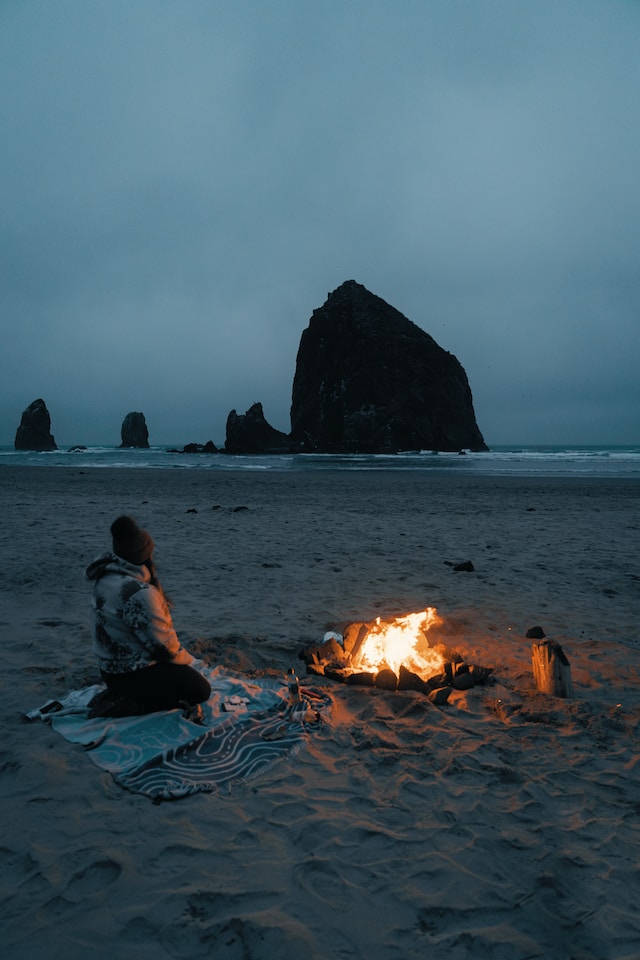Kolbie Blume’s fourth challenge occurred way back in September, but I never posted a retro! Luckily, I did take notes on most of the paintings at the time. So here’s a better-late-than-never loved & learned.
Night


Colors:
- HO Indigo
- DV Red Rose Deep
- HO Titanium White gouache
Loved:
- That I didn’t start over but stuck with it!
- Glowing stars from mistakes!
- Indigo and violet color palette
Learned:
- Going the easy route on the mist probably would have been more realistic, tbh. (I made the top of the ocean sharp with tape, and it didn’t need to be.)
- It’s ok to emphasize elements; I made the waterfall the same size as in the photo roughly, but I think I prefer those who made larger ones.
Blue Sky



Colors:
- DS Monte Amiata Natural Sienna (PBr7)
- DV Burnt Sienna Deep (PR101)
- WN Venetian Red (PR101)
- DV Ultramarine Blue (PB29)
- HO Phthalo Blue RS (PB15)
Loved:
- That I had fun.
- That I experimented and went against my instincts at times to see what would happen.
- Silver linings (esp on take 1).
- Deep blue sky color.
- Some of the grayer cloud grays.
Learned:
- “Colors” in the clouds are interesting, but they can be very subtle and still read as chromatic.
- It’s easy to overdo earth yellow in cloud grays.
- You can darken the values in clouds more than you think.
- Variation is better than uniformity. Beware overmixing and making things homogenous.
- Thirsty brush rays of sunshine are not my favorite.
- The second take is worse! It’s not always worth it to take a second run at it, especially if you haven’t really sat with the lessons of the first take.
Dusky Sunset



Colors:
- WN Naples Yellow Deep (PBr24)
- DV Quin Red (PR209)
- HO Quin Magenta (PR122)
- HO Phthalo Blue RS (PB15)
- HO Indigo
Loved:
- The clouds did come out pretty nice especially in the final version!
- Juxtaposition of violet and orange for clouds
- Slightly muted/ochreish coral/peach colors
- Colors palette overall! Especially like NYD as a primary sunset yellow, bright but not garish; Quin Coral and Quin Magenta to form various shades of oranger or purpler pink; Phthalo Blue RS for deep sapphire skies that are just green enough; Indigo for darker tones and silhouettes (Payne’s Gray also would have worked). Perhaps I was just missing a convenience dull red for making mauves as the QM purples are so bold.
Learned:
- Again, starting over is a seductive but perfectionism-inducing path; once you do it once, you’re likely to do it a lot more times, and tbh unlikely to get significantly better than your first attempt unless you take a totally different tack.
- Following the reference photo isn’t always the right way to go. I liked Kolbie’s looser rendition better.
Beach Bonfire


Colors:
- Payne’s Gray
- Lamp Black
- Indanthrone Blue
- Cerulean Blue
- Indian Red
- Quin Coral
- Benzimida Orange
- Naples Yellow Deep
Loved:
- Sense of glow from the fire, especially the reddish reflected light on the high-contrast rocks near the fire as well as the mini-sand dunes.
- I don’t hate that I didn’t do a “glow” around the fire, since the high-contrast darkness allowed the fire to pop more.
- Use of Benzimida Orange and Quin Coral for fire color.
Learned:
- Do an underdrawing; I went more “intuitive” which means everything was weirdly slanted.
- Plan more areas of light if it’s going to be so low-key overall.
Golden Hour Woods

Reference photo by Kristaps Ungurs via Unsplash Plus
I did not take notes on this one at the time, so I’m not sure what I would have said (though I still remember clearly that I was listening to the “You Are Good” podcast episode about The Devil Wears Prada at the time).
Now, what I’d say I love is the use of red to indicate light, and the strong shadows on the ground. The main thing I wanted – to make the light look so light that you squint, even though it’s just paint on paper – works well.
I do think that this one where I felt discouraged, and that was part of why I lost interest for making this post. I felt that I overworked it, the darks were too dark and the little tree on the left got totally lost from putting it down and picking it up two or three times.
What I can learn from this, I think, is better planning to make sure I know where my light areas will be before I put down paint. Masking might have helped.
Conclusion
I found this round to be the most challenging of the Kolbie Painting the Wilderness challenges to date, which is expected – Kolbie is becoming more interested in more complex subjects over time, and also light is just very hard! Painting light is also, I think, the #1 most interesting challenge of watercolor and the main thing I want to capture, so I really appreciated stretching myself for these even though I also flailed a bit.
I think the overall lesson from this, one that I’m really bad at, is planning. Planning ahead the dark and light value areas of the painting, and using masking appropriately (OR NOT, for soft-edged subjects). The places where I struggled the most were situations where I got carried away and overpainted some area where I actually wanted it to stay light. I also erred in the opposite direction – such as the sunsets where I consistently made a larger proportion of the page yellow and a smaller proportion blue than I intended. In some paintings, I erred in both directions and made the whole thing more mid-valued than I wanted. I find it more fun to just start painting without planning, but I think for complex subjects it would save me frustration down the line to do a value study and underdrawing.